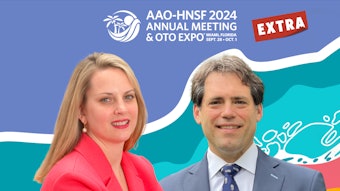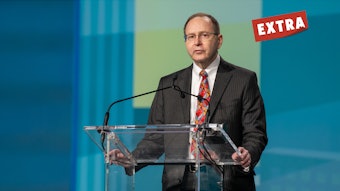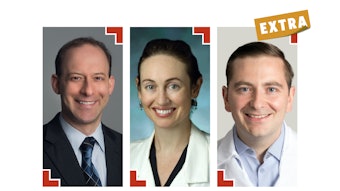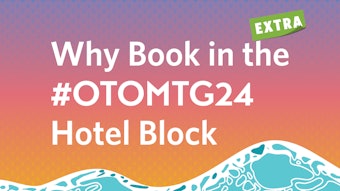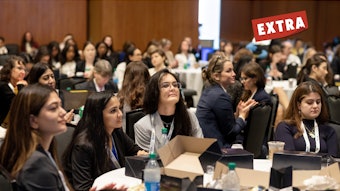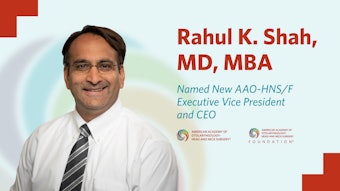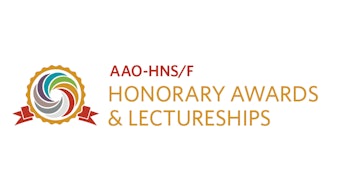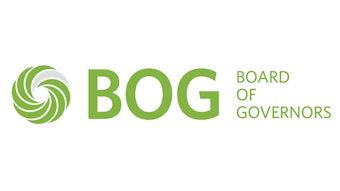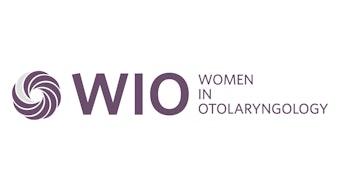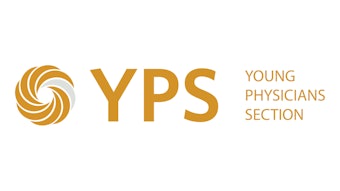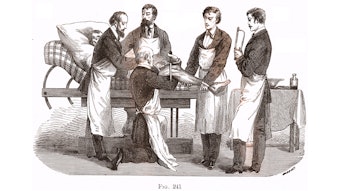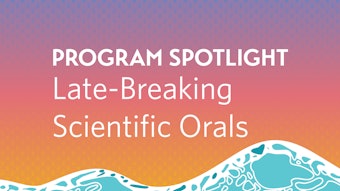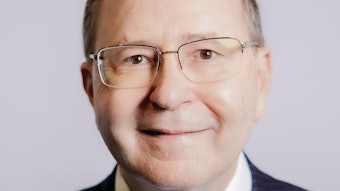Frontiers in the Management of Persistent Pediatric OSA
Common treatment strategies and new technologies for persistent pediatric obstructive sleep apnea.
Rohit Nallani, MD, Erin Kirkham, MD, MPH, and Derek J. Lam, MD, MPH, on behalf of the Outcomes Research and Evidence-Based Medicine (OREBM) Committee
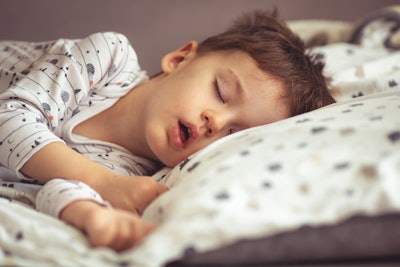
Nonsurgical Management
Children with persistent OSA are often recommended a trial of continuous positive airway pressure (CPAP) therapy. However, success with CPAP is limited by parental hesitation, low adherence rates, and concerns about detrimental effects on midface skeletal growth over time.8,9 Medical management with a leukotriene inhibitor like montelukast with or without nasal steroids is effective for mild persistent OSA, but montelukast must be prescribed with caution in children with baseline behavioral or mood disorders due to concerns regarding mental health changes. Nutrition counseling, weight loss management, and bariatric surgery can be offered for obese children, where appropriate and available.2 Though removable mandibular advancement devices are controversial in children, newer novel nasopharyngeal airway devices are under development and testing for patients with OSA and severe hypotonia.10
Surgical Management
The surgical management of persistent OSA has evolved in recent years as surgical approaches to sleep apnea in adults have been adapted for children. Drug-induced sleep endoscopy (DISE)-directed upper airway surgery has become more common and accepted in pediatrics, and thus DISE is often the first step in evaluation for persistent, symptomatic OSA.11,12 CINE MRI is another tool that can be used prior to considering upper airway surgery.13
The most common second-stage procedures recommended for post-AT OSA in children are lingual tonsillectomy, supraglottoplasty, expansion pharyngoplasty, and turbinate reduction.1 Lingual tonsillectomy and supraglottoplasty on their own have success rates ranging from 10% to 52%, depending on the type of patient and definition of success.14,15 Outcomes data is sparse for expansion pharyngoplasty and turbinate reduction in the persistent pediatric OSA population but given success in treating OSA when combined with AT, these procedures are commonly performed for OSA persistence.1,16 Septoplasty, posterior midline glossectomy, and epiglottopexy can also be employed in select cases, but there is less data on their safety and efficacy.1 Skeletal surgery (i.e. craniofacial surgery, mandibular distraction osteogenesis, maxillomandibular advancement) can be effective for those with retrognathia or craniofacial conditions. Tracheostomy can be offered for children with severe persistent OSA when other treatments are not viable or fail to sufficiently improve disease burden.1,4
Hypoglossal Nerve Stimulation
Patient Selection
In 2023, the Food and Drug Administration (FDA) approved the HGNS implant for treatment of persistent OSA in children with Down syndrome who meet the following criteria:
- Age 13 – 18 years
- Prior adenotonsillectomy
- CPAP intolerance or refusal
- PSG that demonstrates persistent, severe OSA (AHI 10-50 with less than 25% of the total apnea index comprised of central or mixed apnea events ).17
- No concentric collapse at the soft palate on DISE
Activation, Titration, and Follow-up
A recent expert consensus panel published recommendations for HGNS postoperative management in Down syndrome patients (Figure 1).18 The device is activated no sooner than 1 month after surgery followed by an acclimation PSG to identify the optimal voltage to minimize AHI without inducing arousals or central apneas. Titration PSG occurs approximately every 6 months to achieve optimal settings. Once settings are stable, PSG is recommended every 1-2 years to adjust for patient growth. A team approach with a pediatric sleep medicine provider who can assist with implementation of this protocol is crucial for good outcomes in children after implantation.
 Figure 1. HGNS Evaluation, Activation, and Monitoring.
Figure 1. HGNS Evaluation, Activation, and Monitoring.
Efficacy
In 2023, Yu and colleagues published their “Evaluation of Upper Airway Stimulation for Adolescents with Down Syndrome and Obstructive Sleep Apnea.”19 In this study, 42 children with Down syndrome from five institutions were implanted and followed for 12 months.19 At follow-up, 66% of participants were considered responders, defined by a decrease in baseline AHI by 50% or more, with an overall mean decrease in AHI of 12.9 events per hour. A response rate of 66% is on par with outcomes in the adult population.
Tolerance and Adherence
In 40 of 42 patients, the implant was activated for at least 4 hours per night for 70% of nights. Caregivers also reported significant improvements in OSA-specific quality of life and daytime sleepiness. In four patients followed for 44 months, AHI remained within 3.8 events of the 12-month post-operative sleep study values, which suggests longer term durability of response.20 Another multicenter study is currently underway to evaluate the effect of HGNS on neurocognition in children with Down syndrome.
Safety
In the Yu et al study of 42 patients, there were five readmissions and two reoperations, but no devices required removal.19 Nearly all the patients (41 of 42) were discharged within the first postoperative day. A more recent retrospective study by Chieffe et al. reported specifically on the safety of HGNS in 53 patients aged 10 to 22 years with Down syndrome from a single institution.21 The authors identified 30 adverse events, with 17 classified as “nonserious” and 13 as “serious.” The most common nonserious events were tongue discomfort (9.4%) and rash at the surgical site (7.5%). The most common serious events were reoperation (15%) and readmission (9.4%).
Nonresponders
Unfortunately, HGNS may not work for every patient. In the study by Yu et al, more than 65% of patients still had an AHI >5, and 27% had an AHI >10 events per hour. For patients who have multilevel obstruction at sites other than the tongue base, it remains unclear whether and when obstruction should be addressed in the course of treatment when HGNS is an option. Further research is needed to shed light on best practices for management of the most difficult cases.
Ongoing Research and New Directions
HGNS has proven to be effective in children with Down syndrome, but there is potential for broader applications in pediatrics. For instance, children with significant hypotonia that contributes to OSA, such as those with cerebral palsy and other neuromuscular disorders, may benefit. In addition, variations on upper airway stimulation beyond currently available technology are being explored in adults and may ultimately be available for children in the future. Research on patient and caregiver perspectives is needed to better understand the real-world impact of these treatments.
Finally, an alternative approach to treatment of persistent OSA is to prevent it altogether. In some populations of children at high risk for persistence, a personalized, DISE-directed approach may minimize resource utilization and improve outcomes over standard-of-care adenotonsillectomy as an initial intervention. Recruitment is underway for an NIH-funded multi-center randomized trial to test this hypothesis among children with Down syndrome, and a second was recently funded for children with small tonsils. Prospective trials, facilitated by cross-institutional collaboration, are the next frontier to optimize our ability to treat this common and consequential disorder in our pediatric patients.
References
- Ishman SL, Maturo S, Schwartz S, et al. Expert Consensus Statement: Management of Pediatric Persistent Obstructive Sleep Apnea After Adenotonsillectomy. Otolaryngol Head Neck Surg. Feb 2023;168(2):115-130. doi:10.1002/ohn.159
- Bluher AE, Ishman SL, Baldassari CM. Managing the Child with Persistent Sleep Apnea. Otolaryngol Clin North Am. Oct 2019;52(5):891-901. doi:10.1016/j.otc.2019.06.004
- Mitchell RB, Archer SM, Ishman SL, et al. Clinical Practice Guideline: Tonsillectomy in Children (Update)-Executive Summary. Otolaryngol Head Neck Surg. Feb 2019;160(2):187-205. doi:10.1177/0194599818807917
- Ersu R, Chen ML, Ehsan Z, Ishman SL, Redline S, Narang I. Persistent obstructive sleep apnoea in children: treatment options and management considerations. Lancet Respir Med. Mar 2023;11(3):283-296. doi:10.1016/S2213-2600(22)00262-4
- Jungbauer WN, Jr., Zhang K, Melvin CL, Nietert PJ, Ford ME, Pecha PP. Identifying barriers to obstructive sleep-disordered breathing care: Parental perspectives. Int J Pediatr Otorhinolaryngol. Aug 2023;171:111621. doi:10.1016/j.ijporl.2023.111621
- Fayson SD, Leis AM, Garetz SL, Freed GL, Kirkham EM. Racial Disparity in Residual Sleep Apnea After Adenotonsillectomy. Otolaryngol Head Neck Surg. Nov 2023;169(5):1309-1318. doi:10.1002/ohn.366
- Callans K, Carroll DL, McDonough A. Parental experience of hypoglossal nerve stimulator implantation in adolescents with Down syndrome and obstructive sleep apnea. J Pediatr Nurs. Jan-Feb 2023;68:24-29. doi:10.1016/j.pedn.2022.09.001
- Ehsan Z, Ishman SL, Soghier I, et al. Management of Persistent, Post-adenotonsillectomy Obstructive Sleep Apnea in Children: An Official American Thoracic Society Clinical Practice Guideline. Am J Respir Crit Care Med. Feb 1 2024;209(3):248-261. doi:10.1164/rccm.202310-1857ST
- Xanthopoulos MS, Nelson MN, Eriksen W, et al. Caregiver experiences helping children with Down syndrome use positive airway pressure to treat obstructive sleep apnea. Sleep Med. Jul 2023;107:179-186. doi:10.1016/j.sleep.2023.04.022
- Powell AR, Srinivasan S, Helman JL, et al. Novel treatment for hypotonic airway obstruction and severe obstructive sleep apnea using a nasopharyngeal airway device with 3D printing innovation. J Clin Sleep Med. Oct 1 2022;18(10):2497-2502. doi:10.5664/jcsm.10202
- Baldassari CM, Lam DJ, Ishman SL, et al. Expert Consensus Statement: Pediatric Drug-Induced Sleep Endoscopy. Otolaryngol Head Neck Surg. Oct 2021;165(4):578-591. doi:10.1177/0194599820985000
- He S, Peddireddy NS, Smith DF, et al. Outcomes of Drug-Induced Sleep Endoscopy-Directed Surgery for Pediatric Obstructive Sleep Apnea. Otolaryngol Head Neck Surg. Mar 2018;158(3):559-565. doi:10.1177/0194599817740332
- Socarras MA, Landau BP, Durr ML. Diagnostic techniques and surgical outcomes for persistent pediatric obstructive sleep apnea after adenotonsillectomy: A systematic review and meta-analysis. Int J Pediatr Otorhinolaryngol. Jun 2019;121:179-187. doi:10.1016/j.ijporl.2019.02.030
- Rivero A, Durr M. Lingual Tonsillectomy for Pediatric Persistent Obstructive Sleep Apnea: A Systematic Review and Meta-analysis. Otolaryngol Head Neck Surg. Dec 2017;157(6):940-947. doi:10.1177/0194599817725708
- Camacho M, Dunn B, Torre C, et al. Supraglottoplasty for laryngomalacia with obstructive sleep apnea: A systematic review and meta-analysis. Laryngoscope. May 2016;126(5):1246-55. doi:10.1002/lary.25827
- Com G, Carroll JL, Tang X, Melguizo MS, Bower C, Jambhekar S. Characteristics and surgical and clinical outcomes of severely obese children with obstructive sleep apnea. J Clin Sleep Med. Apr 15 2015;11(4):467-74. doi:10.5664/jcsm.4608
- Inspire Medical Systems, Inc. Announces FDA Approval for Pediatric Patients with Down Syndrome. Inspire Medical Systems, Inc; March 21, 2023.
- Chieffe D, Baldassari CM, Friedman N, Smith D, Heubi C, Hartnick C. Pediatric Down Syndrome Upper Airway Stimulation: Patient Selection and Post-Implantation Optimization. Otolaryngol Head Neck Surg. Apr 2024;170(4):1158-1166. doi:10.1002/ohn.633
- Yu PK, Stenerson M, Ishman SL, et al. Evaluation of Upper Airway Stimulation for Adolescents With Down Syndrome and Obstructive Sleep Apnea. JAMA Otolaryngol Head Neck Surg. Jun 1 2022;148(6):522-528. doi:10.1001/jamaoto.2022.0455
- Stenerson ME, Yu PK, Kinane TB, Skotko BG, Hartnick CJ. Long-term stability of hypoglossal nerve stimulation for the treatment of obstructive sleep apnea in children with Down syndrome. Int J Pediatr Otorhinolaryngol. Oct 2021;149:110868. doi:10.1016/j.ijporl.2021.110868
- Chieffe D, Liu RH, Hartnick C. Challenges and adverse events in pediatric hypoglossal nerve stimulation. Int J Pediatr Otorhinolaryngol. Jan 2024;176:111831. doi:10.1016/j.ijporl.2023.111831
